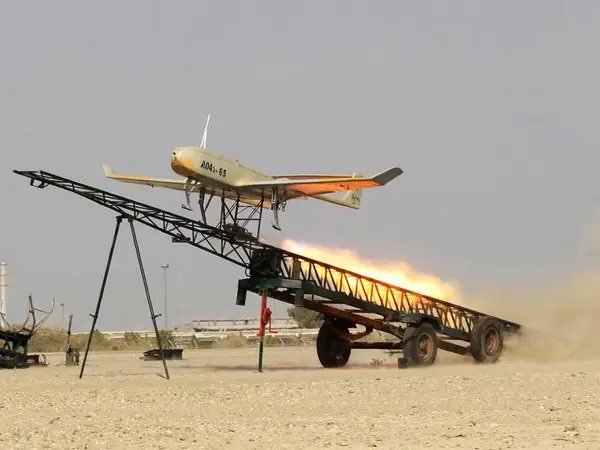In response to a deadly drone attack in Jordan that killed three American soldiers, the United States launched retaliatory airstrikes in Iraq and Syria on Friday, targeting Iran-backed militia groups. The airstrikes resulted in the death of more than 30 people, as reported by Iraqi and Syrian officials.
The U.S. military conducted airstrikes on more than 85 targets in Iraq and Syria against Iran’s Islamic Revolutionary Guards Corps (IRGC) Quds Force and affiliated militia groups. The strikes were carried out by long-range B-1 bombers and were President Biden’s first response to the attack by Iran-backed militia groups that killed three American soldiers in Jordan last weekend.
U.S. Defense Secretary Lloyd Austin said after the strikes that Biden had directed additional action against the IRGC and those linked to it. “This is the start of our response,” Austin said. “We do not seek conflict in the Middle East or anywhere else, but the president and I will not tolerate attacks on American forces.”
The U.S. Central Command (CENTCOM) confirmed that Jordan took part in the strikes in Syria, targeting Iranian proxy targets in response to the attack on U.S. forces that took place inside Jordanian territory in violation of international law.
Sen. Jack Reed, D-R.I., the chairman of the Senate Armed Services Committee, praised the U.S. retaliatory strikes as a “strong, proportional response.” He added, “I salute the brave U.S. military members who carried out today’s strikes, and I support President Biden’s robust action. These strikes, in concert with wise diplomacy, send a clear signal that the United States will continue to take appropriate action to protect our personnel and our interests.”
However, an Iraqi militia official downplayed the U.S. strikes, saying that the targeted sites in Iraq were mainly “devoid of fighters and military personnel at the time of the attack.” Hussein al-Mosawi, spokesperson for Harakat al-Nujaba, one of the main Iranian-backed militias in Iraq, said, “We do not wish to escalate or widen regional tensions.”
The U.S. military also continued strikes against Iran-backed Houthi rebels in Yemen on Friday while conducting retaliatory airstrikes in Iraq and Syria. At approximately 10:30 a.m. local time on Friday, the USS Carney engaged and shot down one unmanned aerial vehicle (UAV) over the Gulf of Arden. Hours later at 4:40 p.m., U.S. forces conducted strikes against four Houthi UAVs that were prepared to launch, officials said. Then at 9:20 p.m., the USS Laboon and F/A-18s from the Dwight D. Eisenhower Carrier Strike Group engaged and shot down seven UAVs over the Red Sea.
The U.S. military said that these actions will protect freedom of navigation and make international waters safer and more secure for U.S. Navy vessels and merchant vessels.
The U.S. strikes in Iraq and Syria were a response to a drone attack in northeast Jordan that killed three U.S. service members and wounded dozens more. The attack was carried out by Iran-backed militia groups, and the U.S. retaliated with airstrikes on more than 85 targets in Iraq and Syria.
The Iraqi government condemned the U.S. airstrikes, saying that 16 people were killed, including civilians. Iraq’s Prime Minister Mustafa al-Kadhimi held an emergency meeting with security officials to discuss the U.S. airstrikes.
The U.S. military has been present in Iraq since the 2003 invasion, and the U.S. has been conducting airstrikes against Iran-backed militia groups in Iraq and Syria since 2014. The U.S. has been trying to prevent Iran from establishing a foothold in the region and from carrying out attacks on U.S. forces.
The U.S. airstrikes in Iraq and Syria have been a topic of controversy, with some critics arguing that the U.S. military presence in the region is not justified. However, supporters of the U.S. military presence in the region argue that it is necessary to protect U.S. interests and to prevent Iran from establishing a foothold in the region.
The U.S. military has been conducting airstrikes against Iran-backed militia groups in Iraq and Syria since 2014. The U.S. has been trying to prevent Iran from establishing a foothold in the region and from carrying out attacks on U.S. forces.
The U.S. airstrikes in Iraq and Syria have been a topic of controversy, with some critics arguing that the U.S. military presence in the region is not justified. However, supporters of the U.S. military presence in the region argue that it is necessary to protect U.S. interests and to prevent Iran from establishing a foothold in the region.





